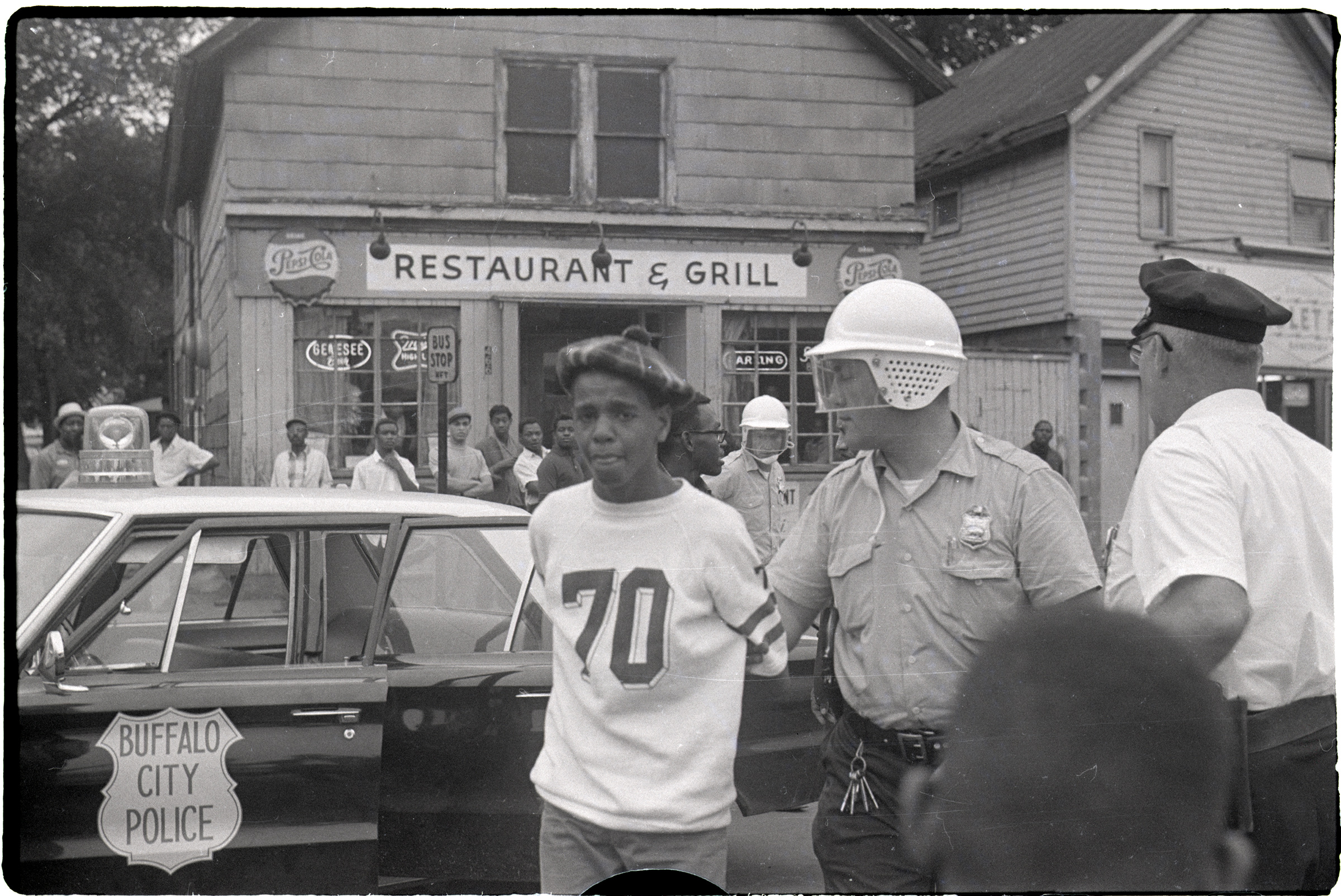
The Buffalo Shooter Targeted a City Haunted by Segregation
The Tops supermarket on Buffalo’s Jefferson Avenue is surrounded by streets lined with dilapidated houses. Around the corner is a small strip with two barbershops, a nail salon, and a heavily guarded M&T Bank. On most days, this part of town sees little foot traffic. But on Monday, it was filled with television news crews and local denomination groups offering self-ruling supplies to a polity that had just experienced a massacre.
The gunman accused of killing 10 people here over the weekend made no secret well-nigh his motive. He came to Tops “to take as many Black lives as possible,” as Buffalo Mayor Byron Brown said. And the suspect, Payton Gendron, did not victorious there by accident.
[time-brightcove not-tgx=”true”]
Gendron allegedly posted a racist manifesto online surpassing the massacre. He wrote the N-word on the gun he used in the attack, equal to The Buffalo News. And law enforcement officials confirmed that the 18-year-old from Broome County, N.Y.—more than a three-hour momentum from the Queen City—had conducted reconnaissance on the Tops location, with the intent of capitalizing on the neighborhood’s concentration of Black people.
In deliberately targeting a grocery store in the heart of Buffalo’s Black community, the accused assailant took wholesomeness of the fact that Buffalo is one of the most racially segregated cities in America. Roughly 85% of the city’s Black residents live in the economically devastated East Side.
This too is no accident. It’s a legacy that dates to World War I, when Buffalo was a major steel municipality producing much of the machinery American forces were using in Europe. That led to an zillions of jobs in the Western New York city, where Black Americans soon came in search of economic opportunity.
It didn’t take long, however, for racial tension and violence to erupt in the 1910s. The city’s public officials quickly responded by restricting Blacks from living in white neighborhoods. Buffalo’s Municipality Hall and New York state government enacted racist zoning laws, while white property owners began to use restrictive covenants to prevent their homes from later stuff sold to Black families, according to research by the Partnership for Public Good, a Buffalo think tank.
Restrictive covenants were outlawed by the Supreme Court in 1948, but racist federal policy housing continued. Black people were denied FHA mortgage loans through redlining, which made it harder for them to buy homes at all, let vacated in middle-class neighborhoods.
“The history of segregation is the history of institutionalized racism in our governments, in our banks, in the extension of credit and opportunity to white people that was intentionally not made misogynist to Black people,” says Miles Gresham, a policy fellow at the Partnership for Public Good.

The problem got worse in Buffalo without World War II, when the construction of a highway in the 1950s and ’60s split the municipality in half. The Kensington Expressway, just a few blocks from the Tops store, destroyed a growing Black neighborhood and cut the municipality into an East and West Side.
“The Kensington Expressway made it easier for white people who had engaged in white flight and moved out into the suburbs to still travel to the economic centers of the area,” Gresham says. It moreover created a new reality in which everything east of the highway—a portion of Buffalo that was once heavily Black—fell into poverty and economic disrepair. The rest of the town fared much better. Today, more than one-third of the city’s 255,000 residents live unelevated the poverty line. Most of them reside on the East Side.
For this part of Buffalo, the opening of the Jefferson Avenue Tops was a big deal. In 2003, then-Senator Hillary Clinton came for the ribbon cutting. Until Tops arrived, the neighborhood was an infamous supplies desert, without a grocery store in walking distance. It was an vigilant problem for the community, particularly since many of its impoverished residents didn’t have wangle to a car.
Betty Jean Grant, a longtime Buffalo politician who pushed for public funding for the Tops when she was on the Buffalo Common Council, says the zone was misfortunate then. “In the 1990s, to have a white person walking east of the Humboldt Expressway or the 33, would have been like a ghost,” Grant says. “They’d be like somebody from Mars, considering people did not walk on the East Side of Buffalo.”
Buffalo as a whole has enjoyed something of a renaissance over the past decade, from the towers of Canalside—a redeveloped district that has revived the town’s Lake Erie waterfront—to the expansion of commercial strips and a new medical campus downtown. Yet the working-class Black neighborhoods on East Side have remained neglected, leaving Buffalo one of the poorest large cities in America.
“The fact that there’s only one grocery store on the East Side that serves Black communities is a choice,” says India Walton, an objector and former Democratic candidate for mayor. “This is not something that’s, like, accidental. No one cares well-nigh Black people on the East Side of Buffalo.”
It’s why activists like Walton, now a senior tipster for the Working Families Party, are pushing not only for policy whoopee to gainsay racism and extremist violence but moreover for the city’s leaders to write the legacy of segregation and inequality that has plagued Buffalo for a century.
“People are tired,” Walton says. “I’m personally ready to shrivel this sh-t down. You can put that on the record. We’re not taking this anymore.”








